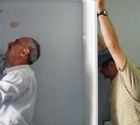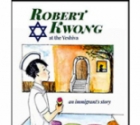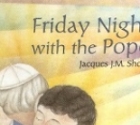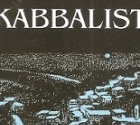
I usually appear in these pages as a book reviewer but recently I’ve taken to thinking about bookmarks. After all, the bookmark is the first aid remedy of all readers. On the plane, train, bus, in the hotel, sitting in a restaurant waiting for a dinner companion (thank goodness matchbooks are harder to find these days because they make awful bookmarks), all those venues where you must stop reading with an immediacy that makes a bookmark more important than a tourniquet. Then my ruminations turn to their physical appearance: leather, metal, wooden, attachable clips or flat metal insertions like the remedy for spinal dislocation. I’ve had them all, all the variations, bought them myself or gotten them as gifts. There is a glaring exception though - I never had them for textbooks. Who in his right mind would want to remember a description of amoeba, or the structure of a parallelogram, an analysis of Middle English? No, textbooks were marked up, dog-eared, sold second-hand, forgotten in a classroom or hopefully lost. When I was starting to become a serious reader I turned the book over, like putting a baby on its stomach or flipping over a cake to cool. Friends and family faced severe retribution if the book was turned back over and closed.
I began musing on what I’ve used as a bookmark: ticket stubs, supermarket receipts, an invitation to house viewings in Reykjavik – from the ordinary to the esoteric. And actually, what constitutes a legitimate bookmark, if there is such a thing. And should a reader seek the literary symmetry of having the bookmark match the book? Should “War and Peace” have a spent cartridge shell on page 213 or a brochure from Amnesty International? And “Anna Karenina” a one way railroad ticket? And the “Odyssey” a ticket for a Greek cruise? This contemplation of bookmarks is becoming less and less of a facile mind game. The questions are beginning to accumulate - my mental workout is cut short by the realization that the bound book and its pages is a relatively modern occurrence in the history of reading. How did the scroll reader mark his place? Did the papyrus page turner take his quill and ink dot his place in the epic? Or the reader of illuminated manuscripts, did he mark his place in the same fashion as the modern reader of “Captain Marvel” comics? And did the reader of the Rosetta Stone request that the author supply the tablet with a small chisel for making a chip mark alongside the next hieroglyph?
The bookmark is a memory keeper: it marks the pages we read, it heralds the pages we have yet to read. The recycled envelopes, postcards, timetables we use as bookmarks are reminders of places and events that obviously we don’t want to forget. So we slyly remember them as we leave them between the pages of a book we will open at another time. Whatever we hold between our fingers and insert between the pages honors the act of slipping into another world, the pleasurable act we call reading.
 A PLACE OF THEIR OWN
A PLACE OF THEIR OWN THANK YOU!
THANK YOU! DEAR EDITOR 156
DEAR EDITOR 156 Robert Kwong at the Yeshiva
Robert Kwong at the Yeshiva  Friday Night with the Pope - A Book Review
Friday Night with the Pope - A Book Review The Kabbalist - A Book Review
The Kabbalist - A Book Review  Pnina Moed Kass
Pnina Moed Kass